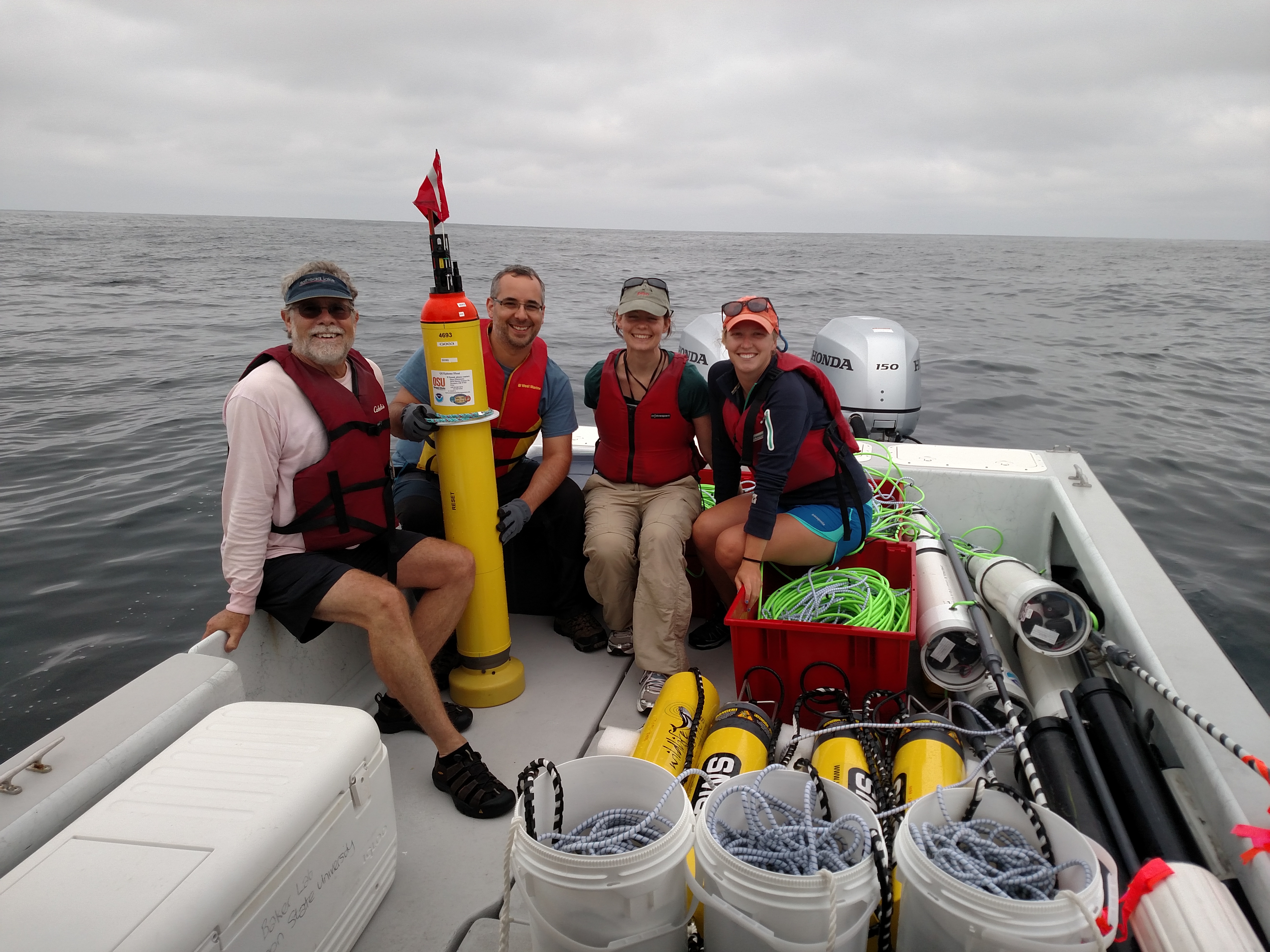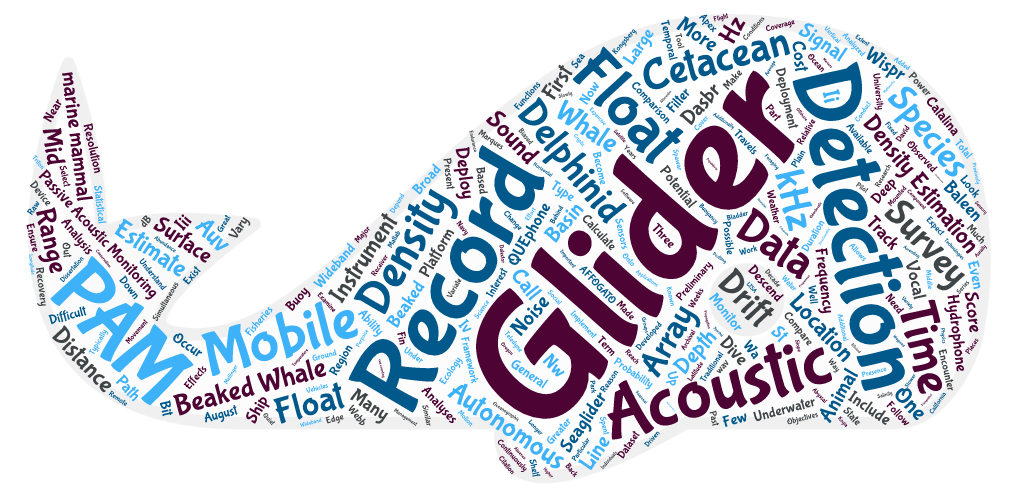Underwater gliders for marine mammal passive acoustic monitoring
Research over the last decade has shown that acoustically-equipped autonomous underwater vehicles, such as Seagliders, are effective platforms for passive acoustic monitoring (PAM) of cetacean species. They can provide a intermediate temporal and spatial coverage of areas and in seasons that are otherwise very difficult and costly to survey visually. My dissertation research conducted the first side-by-side comparisons of acoustic data collected by gliders to acoustic data from more traditional stationary recorders. We demonstrated that acoustic glider data can even be used to estimate cetacean density.
The ability of autonomous gliders to survey remote areas in all seasons makes them ideally suited to survey little-studied areas of the Pacific Islands Region (PIR) to provide supplementary information for cetacean stock assessment. I am involved in two ongoing projects that seek to assess feasibility of using passive acoustic gliders in the PIR and West Coast of the US to advance marine mammal stock assessment, with the goal of transitioning this approach to regular operations by NOAA NMFS Science Centers.

Left: The AFFOGATO team conducting field work near Catalina Island the Southern California Bight. Right: Very happy to have both gliders back in the boat after 8 weeks surveying the Main Hawaiian Islands.
Relevant publications:
- Barlow, J, Fregosi, S, Thomas, L, Harris, D, Griffiths, ET. (2021). Acoustic detection range and population density of Cuvier’s beaked whales estimated from near-surface hydrophones. Journal of the Acoustical Society of America, 149(1): 111-125. doi:10.1121/10.0002881 PDF
- Fregosi, S, Harris, DV, Matsumoto, H, Mellinger, DK, Barlow, J, Baumann-Pickering, S, & Klinck, H. (2020). Detections of whale vocalizations by simultaneously deployed bottom-moored and deep-water mobile autonomous hydrophones. Frontiers in Marine Science. 7: 721. doi:10.3389/fmars.2020.00721 PDF
- Fregosi, S, Harris, DV, Matsumoto, H, Mellinger, DK, Negretti*, C, Moretti, DJ, Martin, SW, Matsuyama, B, Dugan, P, Klinck, H. (2020). Comparison of fin whale 20 Hz call detections by deep-water mobile autonomous and stationary recorders. Journal of the Acoustical Society of America, 147(2): 961-977. doi:10.1121/10.0000617 PDF
- Klinck, H, Fregosi, S, Matsumoto, H, Turpin, A, Mellinger, DK, Erofeev, A, Barth, JA, Shearman, RK, Jafarmadar, K, & Stelzer, R. (2016). Mobile autonomous platforms for passive-acoustic monitoring of high-frequency cetaceans, In A. Friebe and F. Haug (Eds.), Robotic Sailing 2015, Springer International Publishing, pp. 29–37. doi:10.1007/978-3-319-23335-2_3 PDF
- Matsumoto, H, Haxel, J, Turpin, A, Fregosi, S, Klinck, H, Klinck, K, Baumann-Pickering, S, Erofeev, A, Barth, JA, Dziak, RP, & Jones, C. (2015). Simultaneous operation of mobile acoustic recording systems off the Washington Coast for cetacean studies: System noise level evaluations, Oceans 2015 MTS/IEEE, 19-22 October, 2015, Washington, D.C. PDF
Software:
Media:
Datasets:
- Mellinger, D, Hiemlich, S, and Fregosi, S. 2021. Glider CTD and passive acoustic data from the northern Gulf of Mexico, 2017-06-09 to 2017-07-19. Distributed by: Gulf of Mexico Research Initiative Information and Data Cooperative (GRIIDC), Harte Research Institute, Texas A&M University–Corpus Christi. doi:10.7266/N7H993J0

Wordcloud of my dissertation proposal.